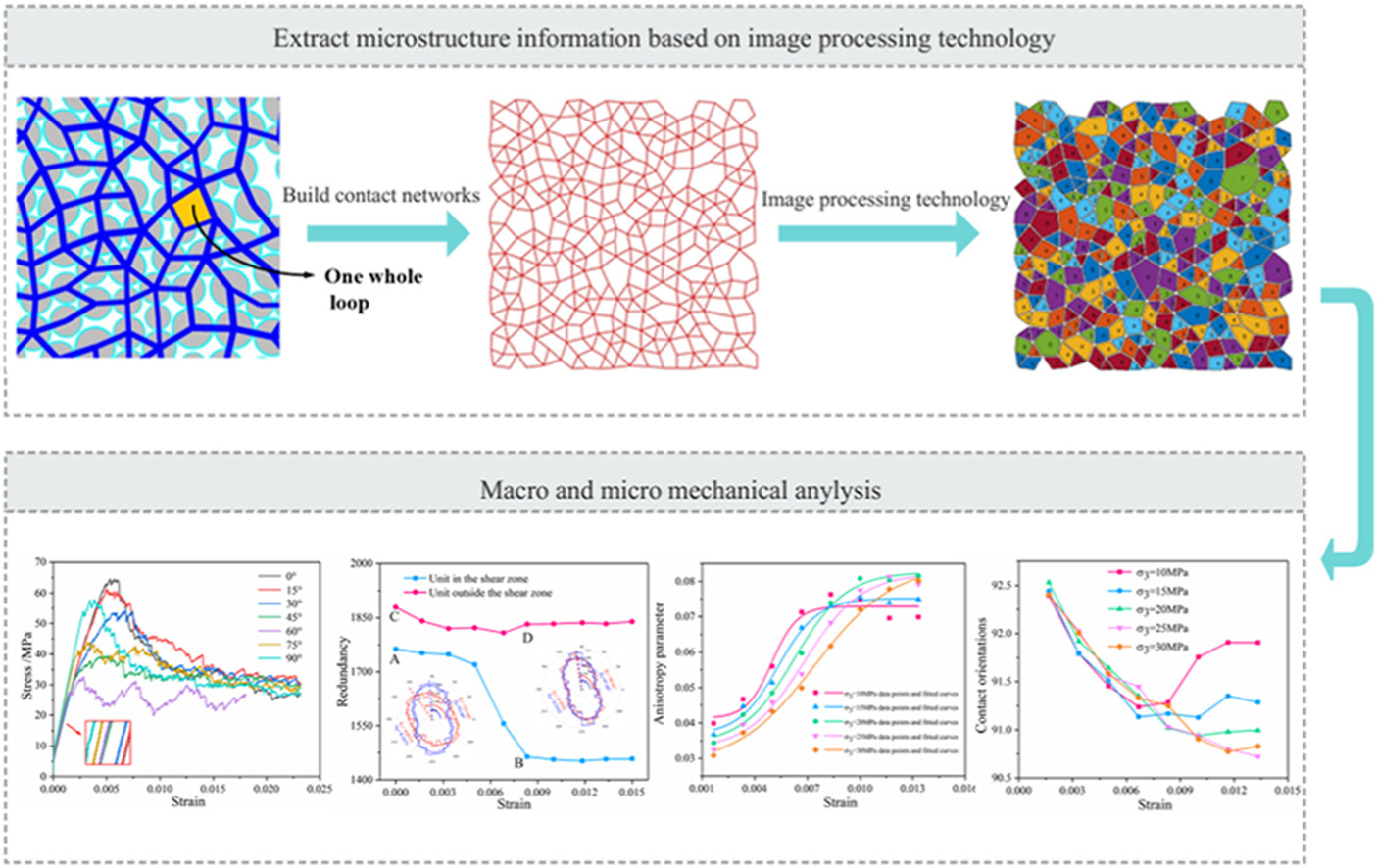• Digital image processing technology can quickly extract the microstructure information.
• Redundancy is defined to evaluate microstructure stability.
• Effects of confining pressure and bedding angle on microstructure evolution of shale are studied.
The study of macroscopic discrete granular materials holds significance in hydraulic engineering, geotechnical engineering, as well as road and bridge engineering. Its foundational scientific exploration bears profound theoretical implications and is of pivotal practical value to engineering endeavors. Within the realm of engineering construction, issues such as dam breakages, earth-rock dam damage, and geological disasters involving loose particles pose substantial threats to the safety of both national livelihoods and property. Thus,delving into the examination of the structural stability of granular materials at the mesoscopic scale becomes an imperative pursuit. In this study,the topological structure of granular materials is identified and segmented based on image processing techniques,and the relationship between the compressive capacity of polygonal structures and the number of polygonal sides is studied. The redundancy function is defined to evaluate the structural stability of granular materials. In addition,the definition of structure tensor is introduced,and redundancy and structure tensor are applied to the study of biaxial compression of shale materials. The research results contribute to improving engineering safety and have guiding merits for the research and application of granular materials. Future work could focus on extending these methods to other types of granular materials and exploring their behavior under different loading conditions.

